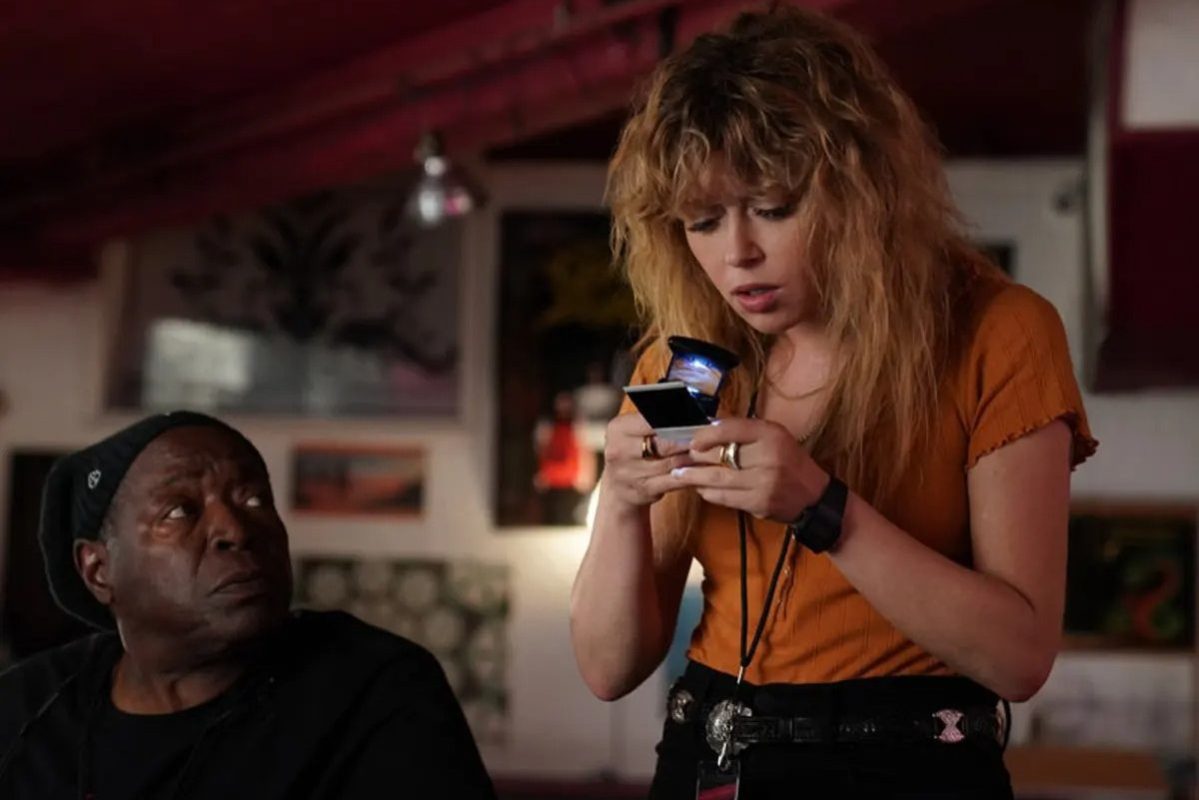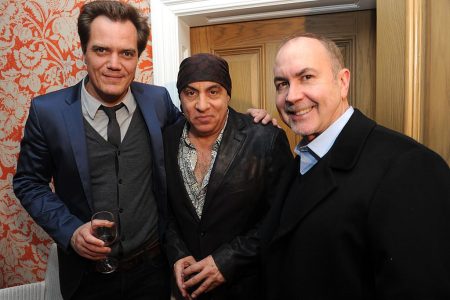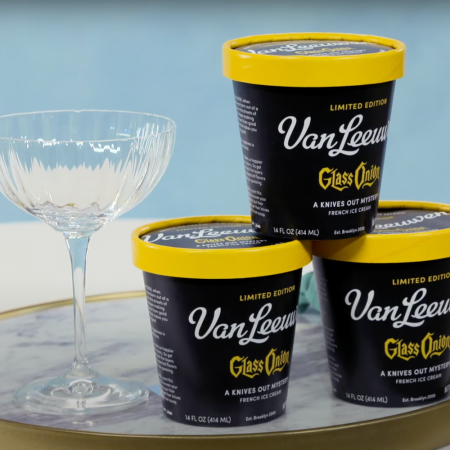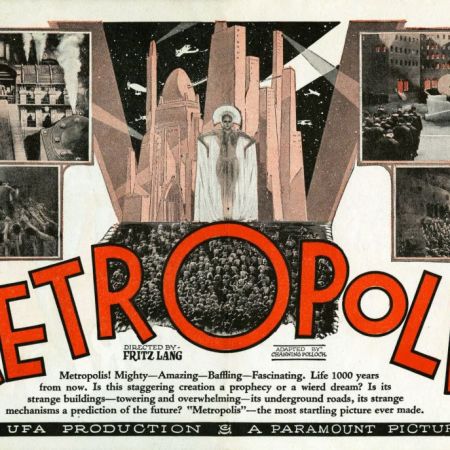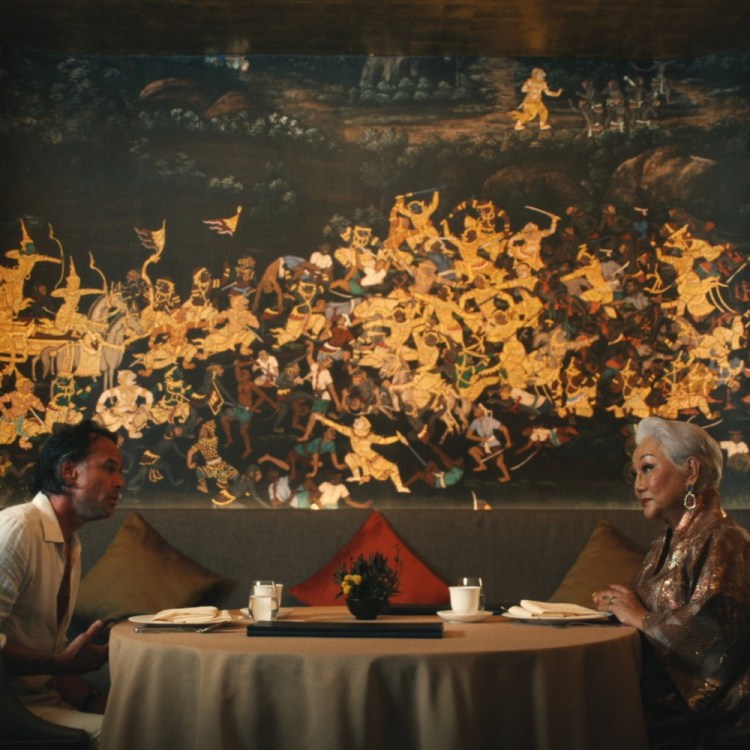Warning: this post contains spoilers for the season finale of Poker Face.
Every detail matters in Poker Face. Over its engaging 10-episode run, Rian Johnson’s intricately webbed Peacock mystery series has captured the throwback spirit of the procedural with a dynamite lead performance (Natasha Lyonne), rich photography (Steven Yedlin, Christine Ng and Jaron Presant), and a host of engaging and unexpected guest stars (Judith Light! Nick Nolte! Ellen Barkin!). But much like protagonist Charlie Cale, the show thrives when it sweats the small stuff — a bottle cap, a woodchip, a song lyric — and never neglects someone’s discreet tics, little white lies or tiny inconsistencies. Of course, they’re no match for Charlie’s inherent bullshit detector, but they fill this complexly crafted “howcatchem” with humor, color and plenty of eureka moments.
So, in this week’s season finale, when a bridesmaid gives Charlie a blue-light penis ring on a bachelorette bus tour and calls it a “talisman that will lead you out of this place” with all the spiritual wisdom that a wasted white girl can muster, you better believe it’s going to help her solve one last murder. In what becomes a fitting bookend to the series, a detained Charlie ends up inside an Atlantic City casino framed for murdering Sterling Frost Sr. (Ron Perlman) during a brief power outage. Eventually, thanks to her handy penis ring’s capabilities, she discovers Cliff (Benjamin Bratt) to be the real killer — her circumcised jewelry exposes his glowable poker chips, which gave him a target in the dark to end his boss’s life.
According to sister showrunners Nora and Lilla Zuckerman, that blue light plot device was an homage to the original Ocean’s Eleven, which “felt like a fun, cool way to give a nod to one of the classic casino movies,” Nora tells InsideHook on a Zoom call with Lilla. The old-school tribute fits into Johnson’s own decision to crib from Columbo, another foundational text from that era, whose structure (similar to recent shows such as Criminal Minds and Luther) inverts the whodunnit by identifying the killer up front and letting the audience watch its makeshift detective find and connect all the necessary clues. It’s a format that leans into unsuspecting breadcrumbs, which can sometimes be shaped like male genitalia. “It’s being played for laughs, and then it becomes relevant and a keystone in the solving of the case,” Lilla says. “Every little detail we put into these scripts will pay off.”
Thanks in large part to its anthology-esque nature, Johnson envisioned the show (which was recently picked up for a second season) being able to tell infinite stories. And it makes sense. Each week, Charlie can drive her blue Plyouth Barracuda to a new town, find a temporary job, befriend some strangers and solve another murder. But writing “howcatchems” isn’t easy work. There’s an art to finding the perfect object or scenario and creating a vast, conspiratorial web around it every week. “I think if you sat down and tried to conjure up a Poker Face episode out of thin air you would drive yourself crazy,” Lilla says. In an era of Reddit sleuthing and frame-by-frame breakdowns, just how does this robust writing team craft an intricate mystery? As Nora admits, “we just kind of figured it out on the fly.”
Remembering the Unlikely Series That Launched Netflix’s Original Programming
“Lilyhammer” is where it all beganThe Zuckermans explain their process by charting the course of Poker Face’s ninth episode “Escape From Shit Mountain.” Unlike Charlie’s previous adventures, this specific plot treads into the horror genre: Trey (Joseph Gordon Levitt), a drunken tech bro supposed to be on house arrest, takes his Lamborghini on the icy road, drunkenly swerves around a deer, and slams into Charlie. After he drags and shoves her lifeless body underneath a tree with the help of an old friend, Charlie regains consciousness, finds refuge at a nearby motel where Trey is staying, and slowly discovers —with the help of a kleptomaniac friend and her own slightly functioning faculties — that the culprit of her hit-and-run has more murderous secrets.
To start, the showrunners encouraged everyone in the six-person writing room to throw out pitches for specific worlds, murders, killers and sidekicks. The sisters then took their favorite suggestions and began to make connections; they began with Johnson’s penchant for a snowy environment, combined it with Lilla’s interest in a criminal’s quarantined routine, and added writer Wyatt Cain’s idea to have two friends dump a presumed dead body. “It really does start out as a spine of a story, where you know where you’re going and what to play out,” Lilla says. “You start to think, ‘How is Charlie going to realize that these guys are the ones that hid her?’” She and Nora then started brainstorming the finer details, weaving in a Proustian subplot with Trey’s coconut rum drinking habit that would trigger Charlie’s sense memory. “You sprinkle it back and you’re like, ‘She should be talking about [the rum] right when she’s coming to and they assume she can’t remember anything,’” Lilla says. “It plays like a funny comedic flourish and then it becomes super significant.”
The piecemealed ideas often take a while to percolate. “There’s a lot of times where you really are hitting your head against the wall,” Nora says. But the writer’s room proved beneficial during stalled moments, especially for Johnson, who was used to writing independently. “All of the sudden the problem you’re trying to solve in your head has six other heads trying to solve it,” she adds. “Even if someone can say a word or say a joke, that will spur the solution.” The audience’s experience plays a factor in determining plot lines and red herrings, too, like at the end of “Shit Mountain,” when it appears Trey makes it successfully back to his apartment despite being drugged. That is, until Charlie reveals that she’s successfully stolen his ankle monitor without him realizing, an extra twist that toys with your emotions. “That’s kind of the fun of Poker Face is you’re not sure who you’re rooting for and why,” Lilla says. “You’re being taken on a journey.”
Ultimately, Poker Face became a real-time learning experience for the Zuckermans. Even if everything felt buttoned up on the page, sometimes a prop master would express a concern and force a last-minute scramble to find a solution. “It gets really granular once you’re into production and that’s why it’s critical for writers to be on set when these episodes are being produced,” Lilla says. But the “howcatchem” format, they also realized, provided more opportunities to dig into villains who might otherwise be hiding in plain sight inside a whodunnit. “When you’re starting with the murderer, starting in their world and bringing the viewer along where they’re almost on their side, it’s really cool,” Lilla says. “I think that’s the reason we were able to get so many incredible guest stars.”
As the end of first season suggests, Charlie seems burdened to keep looking over her shoulder and continuing life on the road. But now that the Zuckermans have 10 episodes under their belts, they’re excited to keep tinkering with the creative process, balancing the show’s light and dark gradations and finding more ways for Charlie to subvert expectations with, as Lilla notes, her “zany, terrifying, spooky, mind-bendingly intricate” designs and details.
“We’re just going to continue to innovate episode after episode,” she says.
This article appeared in an InsideHook newsletter. Sign up for free to get more on travel, wellness, style, drinking, and culture.
